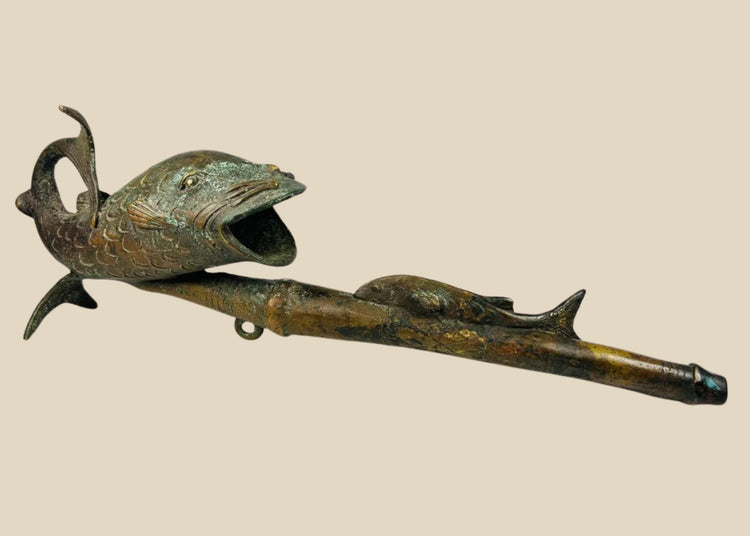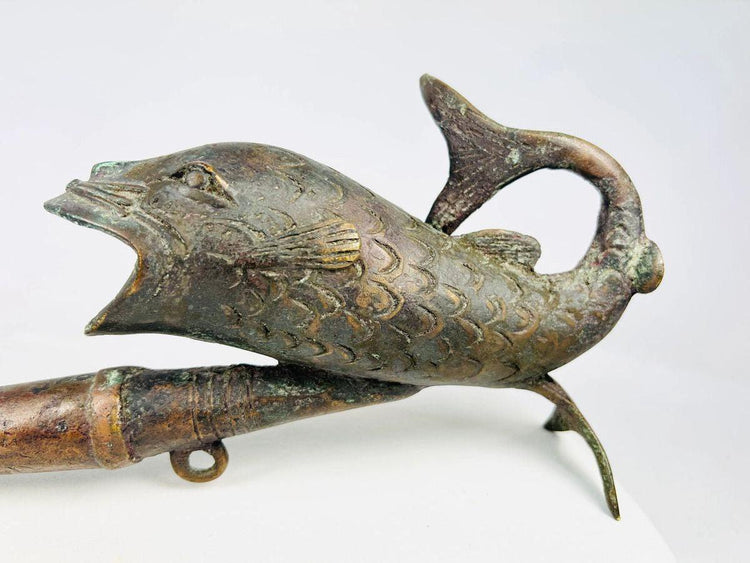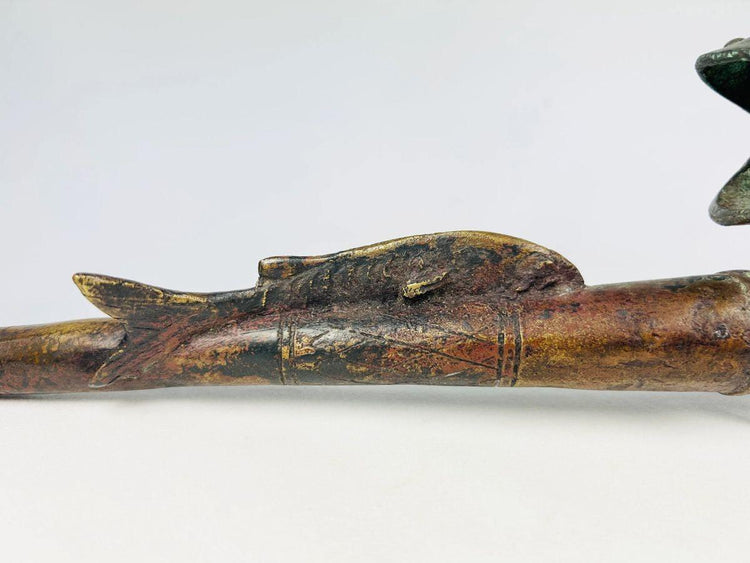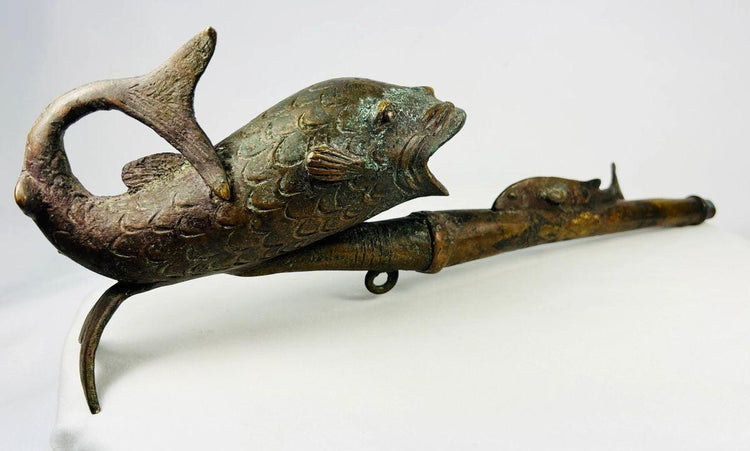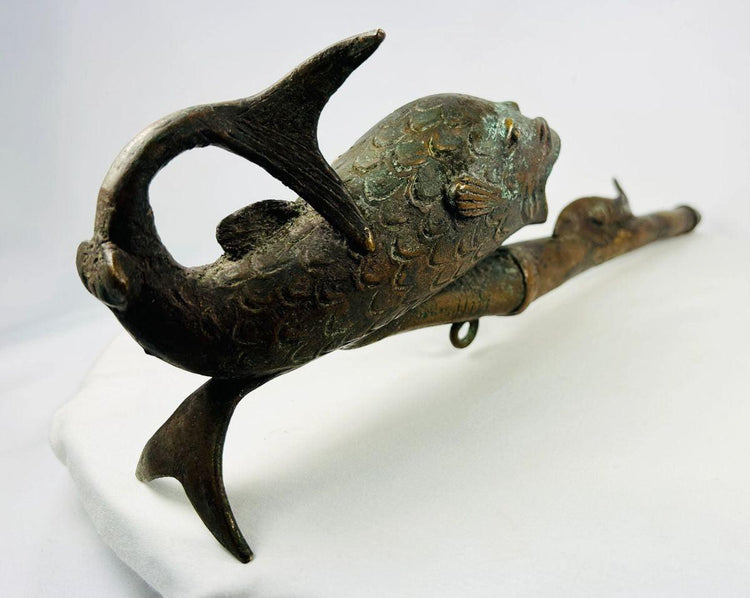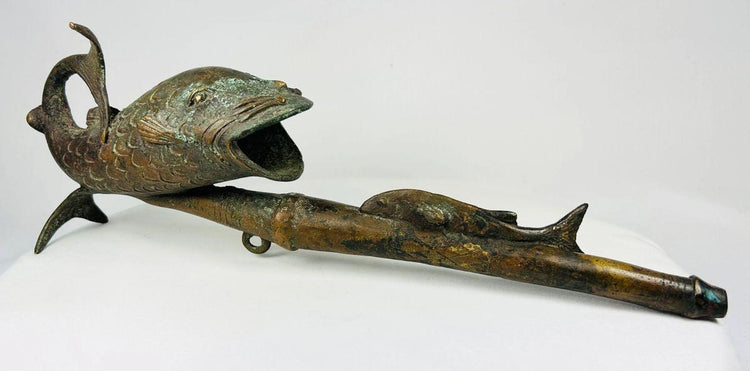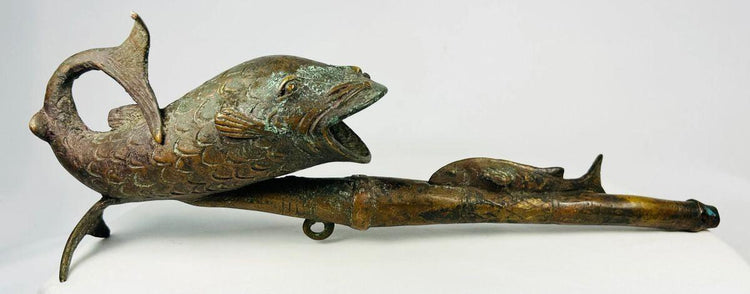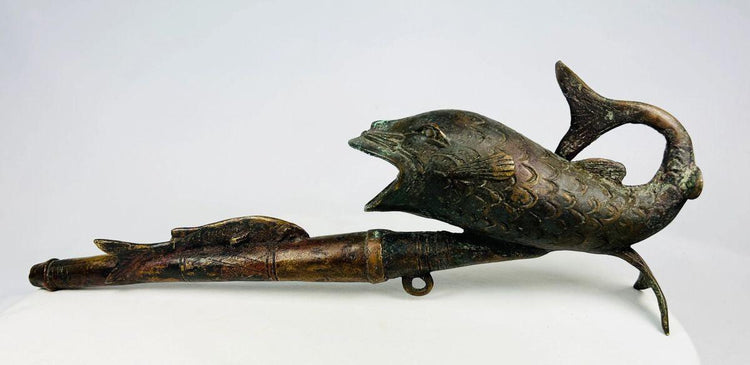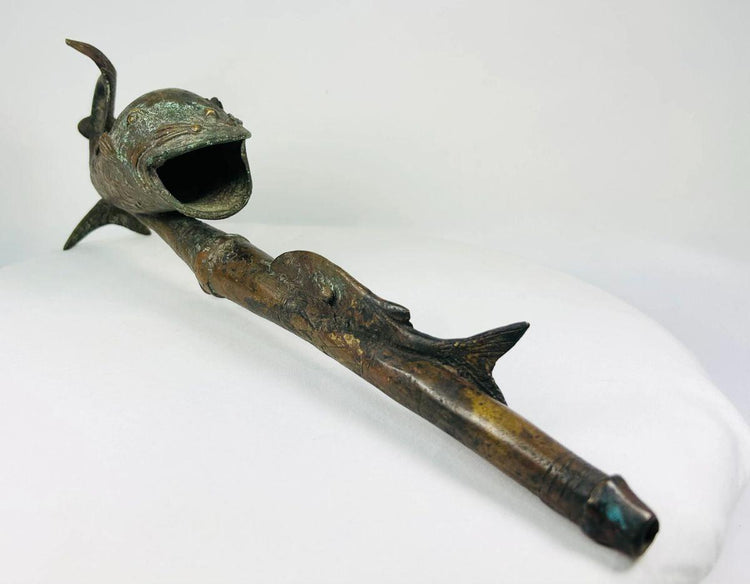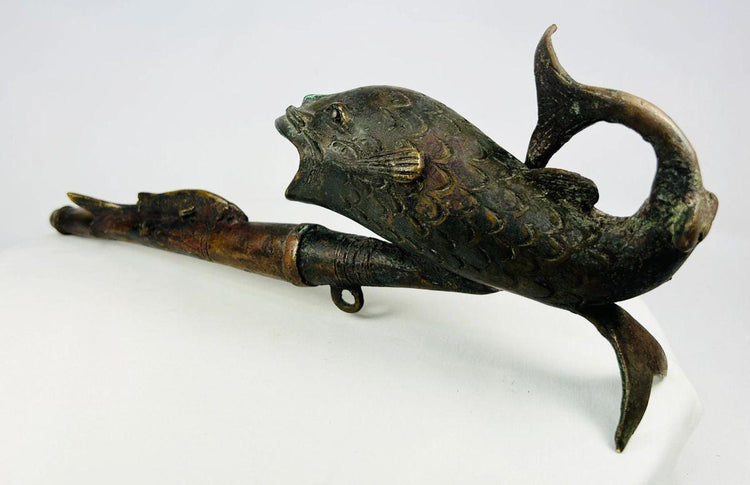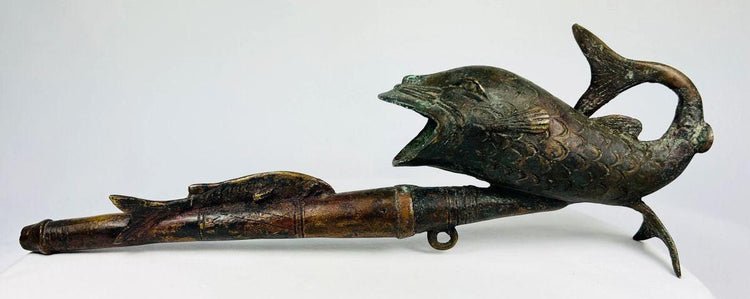Central African Bronze Pipe | Fish-Shaped Lost-Wax Casting with Verdigris Patina | Early–Mid 20th Century
Description
More
Less
Historical Context & Origin
Region: Cameroon, Central Africa
Material: Cast bronze
Period: Early to mid 20th century (circa 1920–1950)
Description
This is a striking example of a traditional Cameroonian bronze pipe, crafted in the form of a stylized fish—its body forming the bowl and stem, with mouth agape in expressive detail. The larger fish is sculpturally dynamic, with textured scales, a pronounced dorsal fin, and a curving tail that serves as a visual anchor. Along the pipe’s stem, a smaller fish motif is subtly integrated, contributing to the layered symbolism of fertility, abundance, and the spiritual significance of aquatic life in West and Central African cosmology. The piece is sand-cast using the lost-wax technique—a method long employed by the Bamum, Tikar, and related peoples—showing excellent surface oxidation and patina in hues of dark green, copper brown, and trace verdigris, indicative of age and ritual use.
Features
- Sculptural fish-shaped form with open mouth
- Secondary fish motif on the stem
- Beautiful aged patina with traces of gilding or ochre
- Suspension loop beneath the barrel for hanging or securing
- Handmade with visible casting lines and tool marks
Cultural Significance
Bronze pipes such as this were not merely smoking instruments but potent symbols of prestige and identity among tribal leaders, elders, and warriors. The fish, often linked to water spirits and wealth, played a role in both ritual and daily life. These sculptural forms also functioned as statements of craftsmanship, passed down through generations.
Condition
Very good condition with wear consistent with age. Minor oxidation, encrustation, and surface pitting are visible, lending authentic character. No major losses or repairs noted.
Dimensions (approximate)
Length: 15 in
Height: 4.75 in
Age
Circa 1920–1950
Description
Historical Context & Origin
Region: Cameroon, Central Africa
Material: Cast bronze
Period: Early to mid 20th century (circa 1920–1950)
Description
This is a striking example of a traditional Cameroonian bronze pipe, crafted in the form of a stylized fish—its body forming the bowl and stem, with mouth agape in expressive detail. The larger fish is sculpturally dynamic, with textured scales, a pronounced dorsal fin, and a curving tail that serves as a visual anchor. Along the pipe’s stem, a smaller fish motif is subtly integrated, contributing to the layered symbolism of fertility, abundance, and the spiritual significance of aquatic life in West and Central African cosmology. The piece is sand-cast using the lost-wax technique—a method long employed by the Bamum, Tikar, and related peoples—showing excellent surface oxidation and patina in hues of dark green, copper brown, and trace verdigris, indicative of age and ritual use.
Features
- Sculptural fish-shaped form with open mouth
- Secondary fish motif on the stem
- Beautiful aged patina with traces of gilding or ochre
- Suspension loop beneath the barrel for hanging or securing
- Handmade with visible casting lines and tool marks
Cultural Significance
Bronze pipes such as this were not merely smoking instruments but potent symbols of prestige and identity among tribal leaders, elders, and warriors. The fish, often linked to water spirits and wealth, played a role in both ritual and daily life. These sculptural forms also functioned as statements of craftsmanship, passed down through generations.
Condition
Very good condition with wear consistent with age. Minor oxidation, encrustation, and surface pitting are visible, lending authentic character. No major losses or repairs noted.
Dimensions (approximate)
Length: 15 in
Height: 4.75 in
Age
Circa 1920–1950
You May Also Like




























